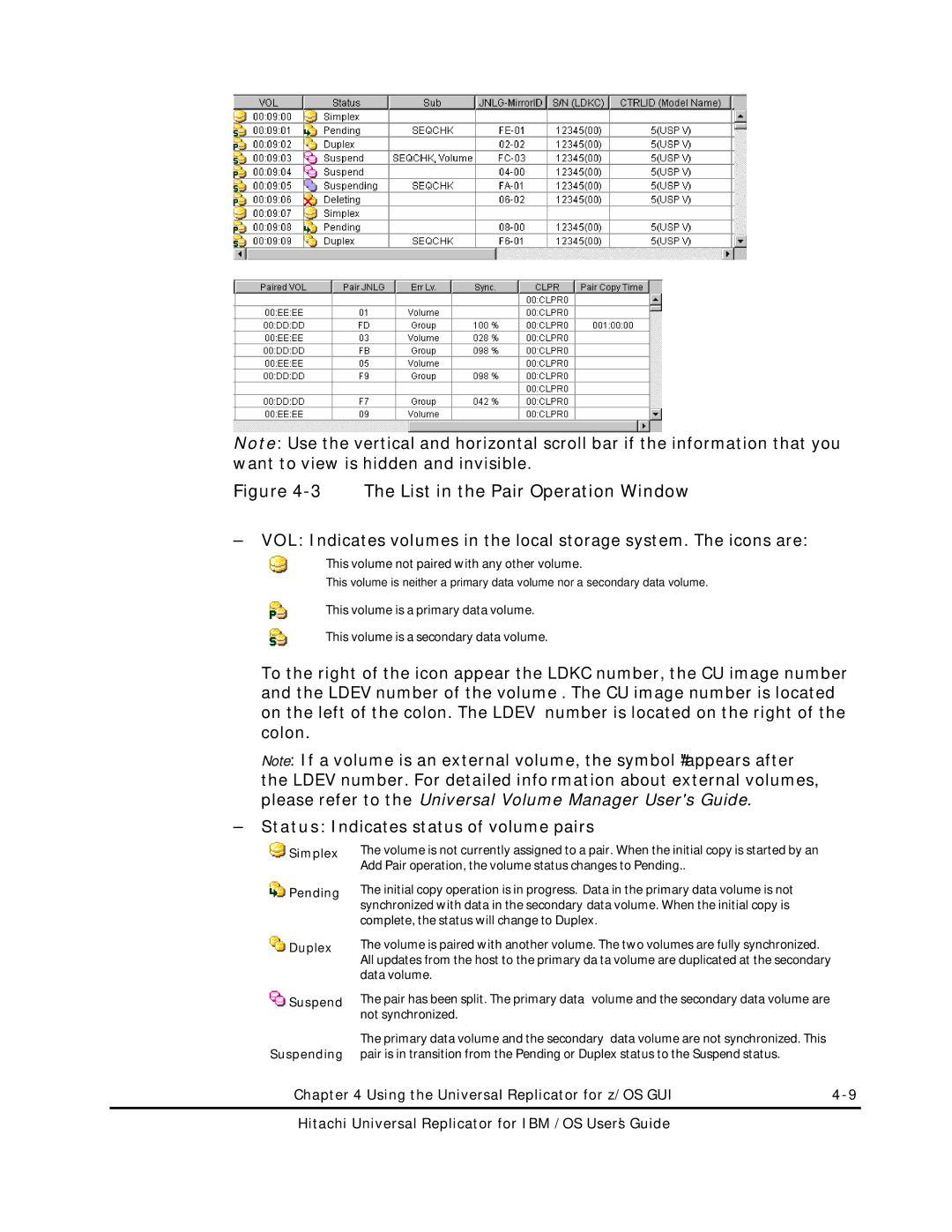
Note: Use the vertical and horizontal scroll bar if the information that you want to view is hidden and invisible.
Figure 4-3 The List in the Pair Operation Window
–VOL: Indicates volumes in the local storage system. The icons are:
This volume not paired with any other volume.
This volume is neither a primary data volume nor a secondary data volume.
This volume is a primary data volume.
This volume is a secondary data volume.
To the right of the icon appear the LDKC number, the CU image number and the LDEV number of the volume. The CU image number is located on the left of the colon. The LDEV number is located on the right of the colon.
Note: If a volume is an external volume, the symbol "#" appears after the LDEV number. For detailed information about external volumes, please refer to the Universal Volume Manager User's Guide.
–Status: Indicates status of volume pairs
 Simplex
Simplex
 Pending
Pending
The volume is not currently assigned to a pair. When the initial copy is started by an Add Pair operation, the volume status changes to Pending..
The initial copy operation is in progress. Data in the primary data volume is not synchronized with data in the secondary data volume. When the initial copy is complete, the status will change to Duplex.
Duplex | The volume is paired with another volume. The two volumes are fully synchronized. |
| All updates from the host to the primary data volume are duplicated at the secondary |
| data volume. |
 Suspend
Suspend
Suspending
The pair has been split. The primary data volume and the secondary data volume are not synchronized.
The primary data volume and the secondary data volume are not synchronized. This pair is in transition from the Pending or Duplex status to the Suspend status.
Chapter 4 Using the Universal Replicator for z/OS GUI |
